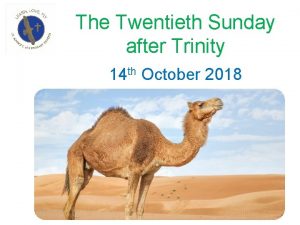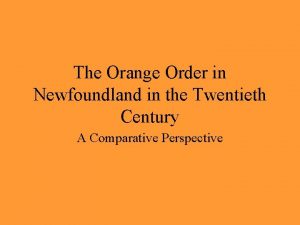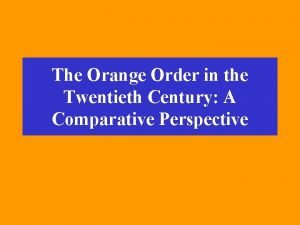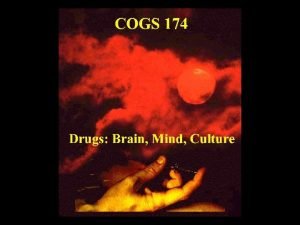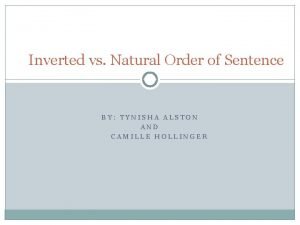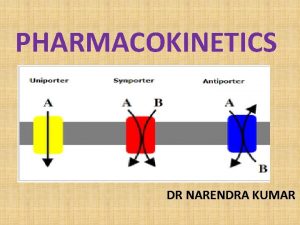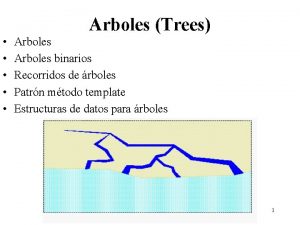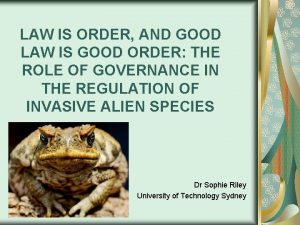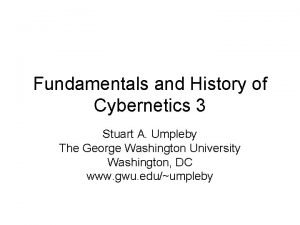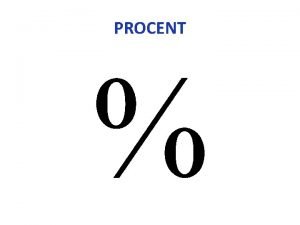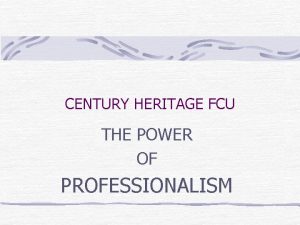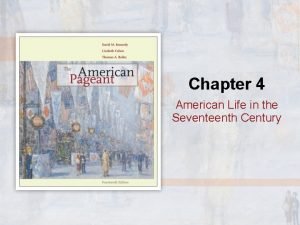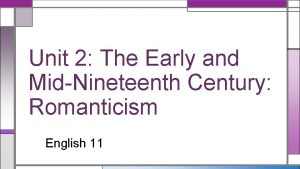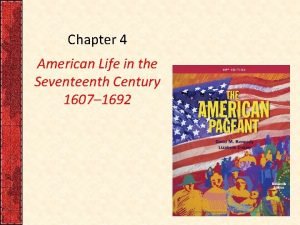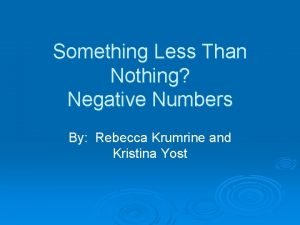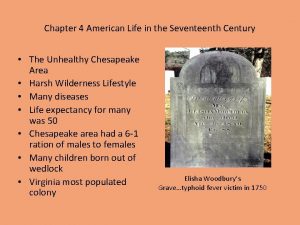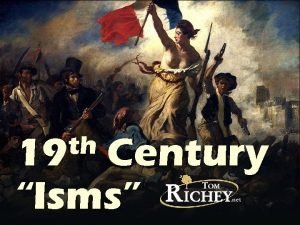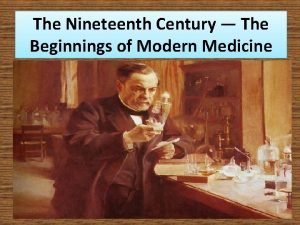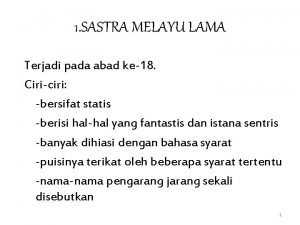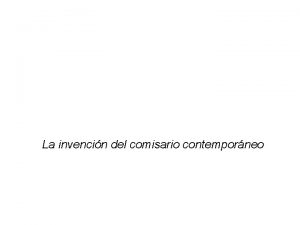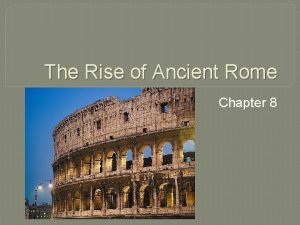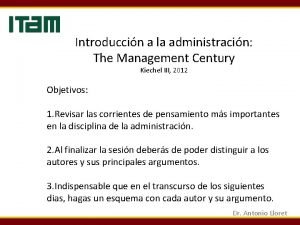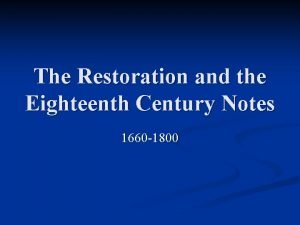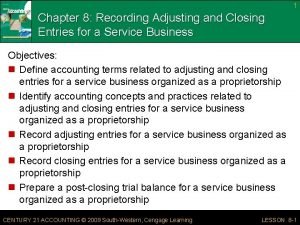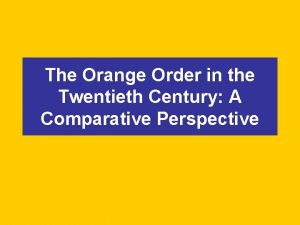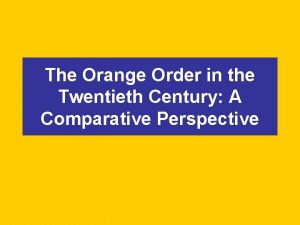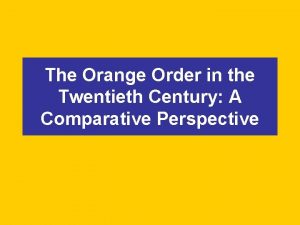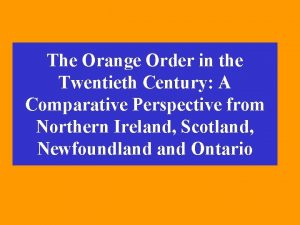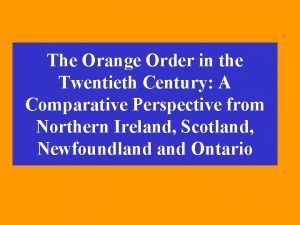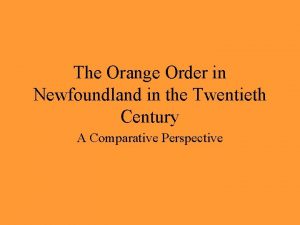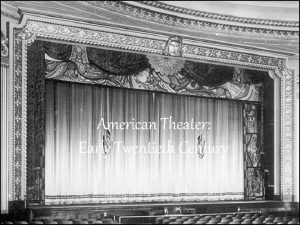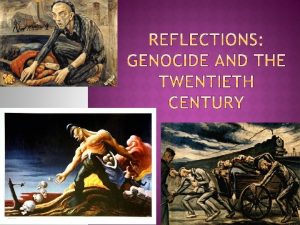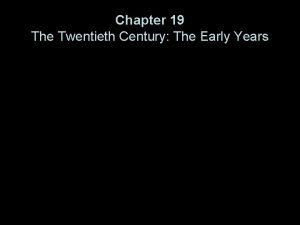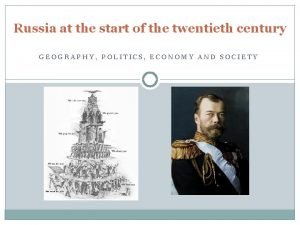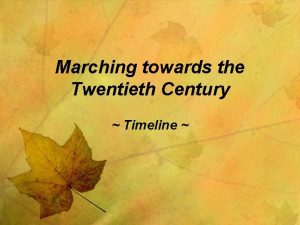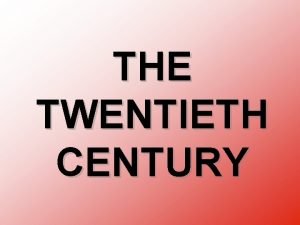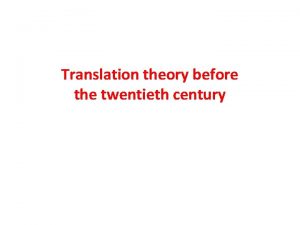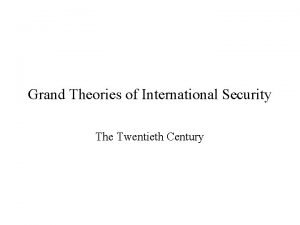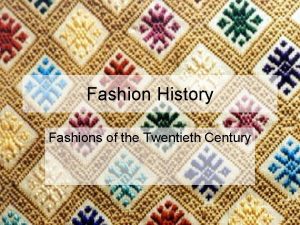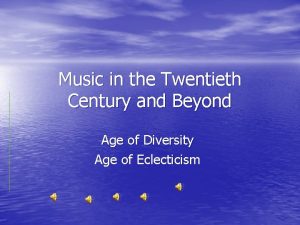The Orange Order in the Twentieth Century A




































- Slides: 36

The Orange Order in the Twentieth Century: A Comparative Perspective from Northern Ireland, Scotland, Newfoundland Ontario


The Orange Order • Formed 1795 in Northern Ireland • Stands for loyalty to British Crown & Protestantism • Associative cornerstone of British dominant ethnicity in Canada, N. I. , west-central Scotland • Rapidly spread internationally

Social & Political Influence. Canada • • • Politically influential by 1867 Many Tory MPs were members Involved in most national issues 1/3 of Ontario legislature was Orange in 1915 1/3 of Ontario males were members during 1870 -1920 • Hundreds of thousands in the wider Orange fraternity as late as the 1950's

Political Influence in N. Ireland • Helped found Ulster Unionist Party • Guaranteed 15% of seats on Ulster Unionist Council • Virtually all Official Unionist MPs are, and have been, Orange members • Orange Order an influential lobby

Quantitative Research • Based on Previously Restricted Membership Data • Previous research has only tracked the number of lodges • Membership data highlights different patterns, contrasts with census and other data • I will look at patterns of membership over time and place



Concentrated in Ontario, NB & Nfld, but strength Nationwide

International Orange Strength • Newfoundland the strongest Orange jurisdiction, similar to Ulster border counties • Belfast area and Ontario similar • WC Scotland NW England much weaker





20 th c. International Orange Membership Trends • Ontario declines first, 1920 • Newfoundland Northern Ireland decline after 1960, though faster in NF • Scotland declines from 1982, but from smaller base

Lodges Cluster in Protestant Areas? • Protestant areas, but: – Scotland Ontario see heavier Orange presence in areas of Irish-Protestant settlement – Northern Ireland counties with higher Church of Ireland proportions have more Orange Protestants – Towns and cities have fewer Orangemen in Northern Ireland, but not in Scotland less so in Canada

Newfoundland Male Orange Lodges, 1961

Orange Order Lodges, Northern Ireland, 1991

Roman Catholic Percentage, Scottish Counties, 1961


Male Orange Lodges, Southern Ontario, c. 1975




Male Orange Density, N. I. , 1971

N. I. Counties, by Protestant Percentage, 1971

Church of Ireland Protestants, N. I. Counties, 1971



Orange Order Density 1991

Causes of Orange Membership Change • Ethnic and Religious changes key (%Irish Protestants, %Catholics, %Established Church) • Economic change less important, though urbanization has a role in Northern Ireland Ontario • Events lie in between cultural shifts and economic changes in importance

Order 'goes native' in Canada but less so in Scotland • In 1881, 3/4 of 256 lodge masters in Scotland are Irish-born; Thought of as an Irish organisation into the 1930 s • In 1901, just 7% of Ontario sample of 340 masters and few Newfoundland members are Irish-born • Numerical success and class profile higher in Canada • Irish Methodists vastly overrepresented in Ontario: a new world adaptation



Political Influence • Order influence tied to membership • Order most 'liberal' in Newfoundland • Class 'slippage' in all areas (N. I. And Canada), 1920 s-1960 s

Conclusion: An Adaptive Organization • Transition between Irish diaspora ethnicity and Protestant dominant-group ethnicity • Convivial, dominant-ethnic and political roles • Adapts most successfully in Newfoundland, followed by Ontario, Liverpool and then Scotland • Political power follows membership strength
 Parker v 20th century fox
Parker v 20th century fox Parker v twentieth century fox
Parker v twentieth century fox Twentieth sunday after trinity
Twentieth sunday after trinity 1st order 2nd order 3rd order neurons
1st order 2nd order 3rd order neurons Orange order newfoundland
Orange order newfoundland Orange order membership
Orange order membership Order/properties-order
Order/properties-order Difference between 1st order and zero order kinetics
Difference between 1st order and zero order kinetics In order issue in order completion example
In order issue in order completion example Natural order example
Natural order example Difference between zero and first order kinetics
Difference between zero and first order kinetics Arbol in order post order
Arbol in order post order In order issue in order completion example
In order issue in order completion example First-order and second-order change examples
First-order and second-order change examples Law is order and good law is good order
Law is order and good law is good order First order cybernetics and second order cybernetics
First order cybernetics and second order cybernetics Order taker vs order getter
Order taker vs order getter New century schoolbook font
New century schoolbook font Big ed
Big ed 0 001 i procent
0 001 i procent Adaptitude
Adaptitude Chapter 4 american life in the seventeenth century
Chapter 4 american life in the seventeenth century Post test the early and mid-nineteenth century romanticism
Post test the early and mid-nineteenth century romanticism Chapter 4 american life in the seventeenth century
Chapter 4 american life in the seventeenth century In what century were negative integers finally accepted
In what century were negative integers finally accepted Chapter 4 american life in the seventeenth century
Chapter 4 american life in the seventeenth century Century molded plastics
Century molded plastics Conservatism
Conservatism Nineteenth century
Nineteenth century 18th century literature examples
18th century literature examples Harald szeemann documenta 5
Harald szeemann documenta 5 Rome chapter 8
Rome chapter 8 How does mistress hibbins eventually die?
How does mistress hibbins eventually die? The management century
The management century The restoration and the 18th century notes
The restoration and the 18th century notes 8-1 and 8-2 on your own accounting answers
8-1 and 8-2 on your own accounting answers New world of work badges
New world of work badges


